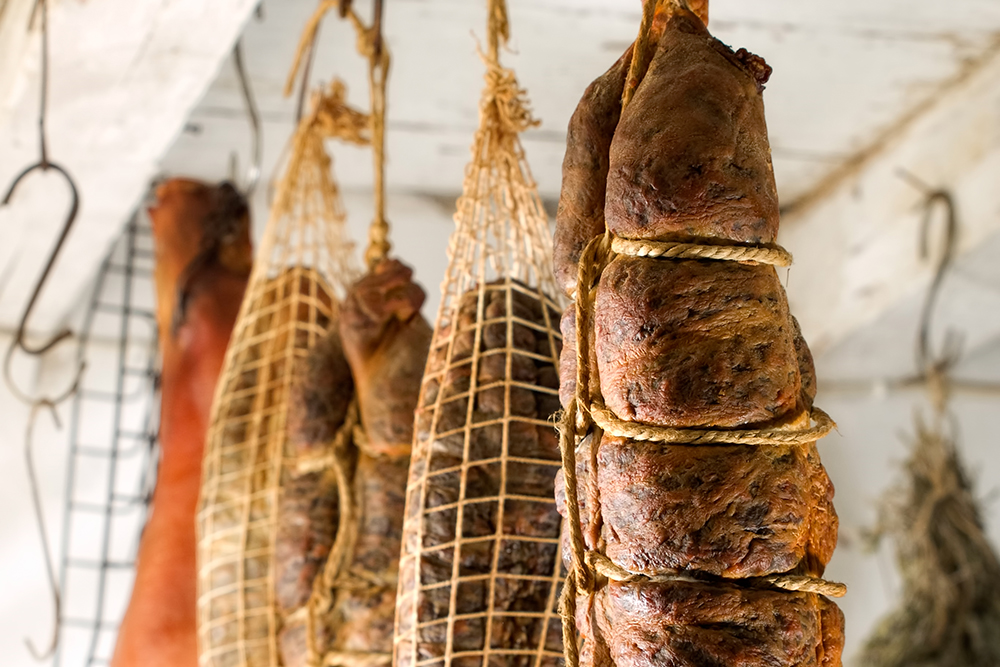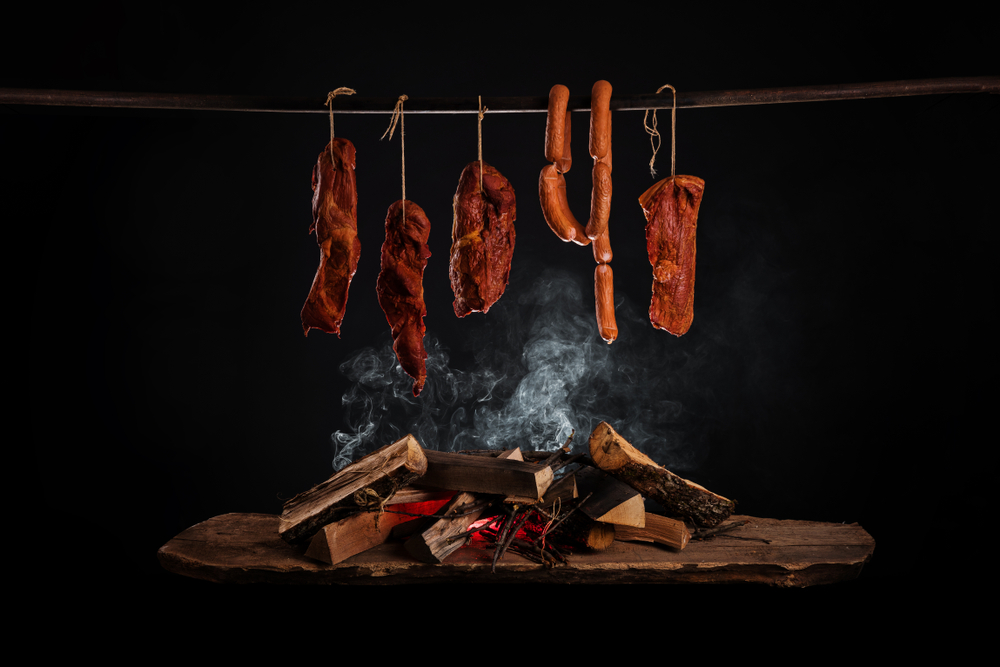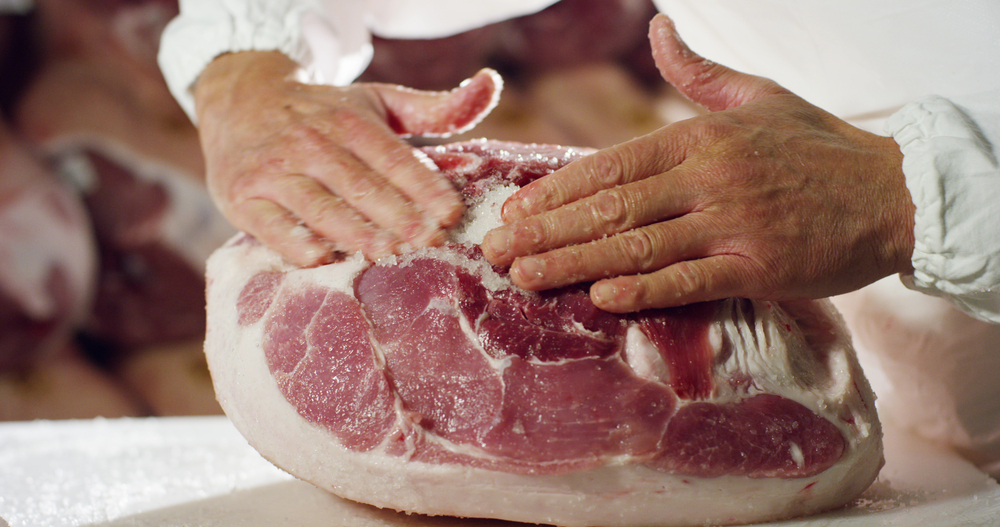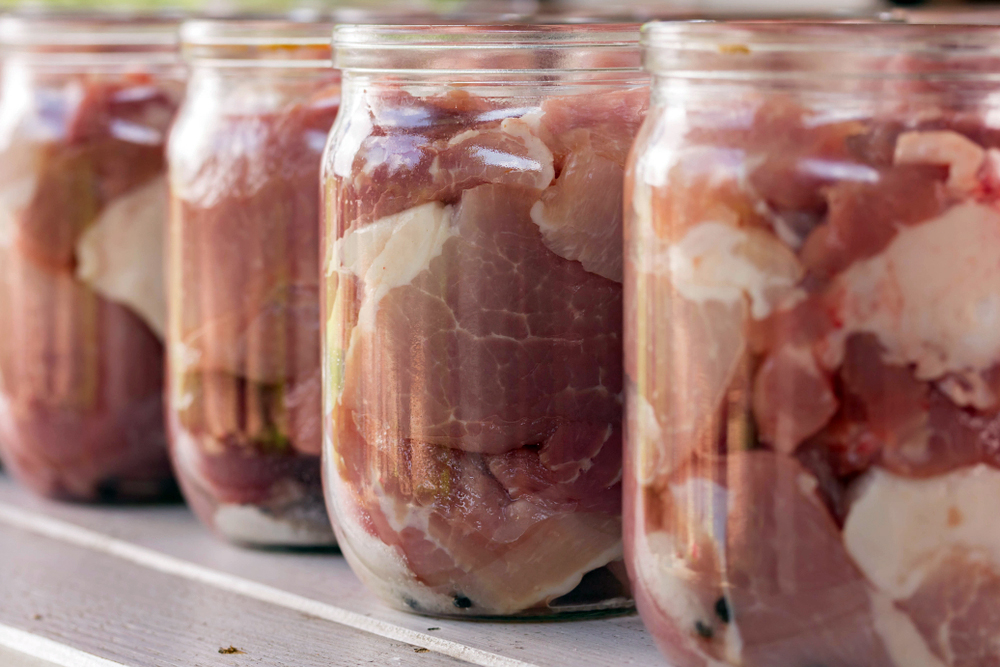Do It Yourself
5 Methods For Preserving Meats For Long Term Food Storage

The pandemic showed how helpless Americans can be when food starts running out on the shelves. Be more self-sufficient and prepared to preserve your meat with these long term food storage methods.
Long Term Food Storage for Meat
When lockdown began to take shape and the grocery stores started emptying out, what made you the most nervous. Most people were shaken more by the empty meat shelves than the empty toilet paper shelves. It became blatantly obvious, even to preppers, that we need a better solution for meat protein.
Buying extra meat and freezing it is always an option. Hunting sounds good, too. Still, we need a means of preserving meat in an off-grid situation. What happens if that freezer dies and you have no way of powering it?
We are going to look at five methods of meat preservation that can get the job done when you don’t have access to a fridge or freezer. You should not assume this is impossible or even difficult. We have been preserving our meat for MUCH longer than we have been throwing it into a freezer.
1. Curing
Using salt to remove the moisture from meats is one of the oldest methods of preservation. The Egyptians used salt to cure meats. This process works best with smaller cuts of meat which allow the salt to penetrate the meat effectively.
Covering meat in salt for just 24 hours can develop a hard outer shell that will protect the meat much more than just leaving it as is.
2. Dehydrating
View this post on Instagram
Many preppers own a dehydrator. These devices use heat and airflow to remove moisture from foods. You can dehydrate meat and the most popular practice for this is the creation of jerky. This is the process of cutting thin strips of meat and usually marinating them in some kind of salty marinade.
Your meat should be very fresh, and you should dehydrate it for at least 6 hours to get the meat to a minimum level of dryness. Most jerky should take all night to dehydrate thoroughly.
You can pack your jerky in mylar with an oxygen absorber for maximum shelf life.
3. Smoking

Smoking is probably the oldest means of preserving meat and a great method for long term food storage. The heat and the smoke both act as a means of removing moisture and even lightly cooking the meat. Things like smoked fish are absolutely delicious and can be enjoyed for days if smoked thoroughly.
We enjoy a lot of smoked meats in the present day like smoked salmon, bacon and hams.
If you have a smoker, that is great, and it can go a long way. However, you can build a simple primitive smoker by creating a tripod from some branches and affixing “shelves” to it using some paracord or Bankline.
These should be small branches that are tied between the three sticks as if you were trying to create the outline of a triangle. Then you lay small sticks over your new triangle shelves to create a grate for hanging your meat or fish. It also helps to brine meat or fish the night before.
4. Salting and Hanging

The process of salting and hanging meat is highly effective and can work on large cuts of meat but it takes some planning. The most popular salted and hung meat is Virginia ham. This ham is dried over six months or more and you can emulate the process at home.
In most climates, you are going to be fighting the weather. If you hang your ham in February by the time June rolls around you will likely have a big ball of mold. However, if you hang your meat around late September, it should be ready by March. This gives you a lot of time to avoid those high heat temps that will spoil the meat.
Large cuts of meat like hams and shoulders should be salted in a large unscented trash bag for 30 days. Rinse the meat and pour some brandy or bourbon over it. Wrap the meat in cheesecloth, a chef coat or a bistro apron and hang it in a garage somewhere.
Leave it alone.
After about three months, you can take a look and trim away any mold that has accumulated.
5. Canning

One of the most popular methods of meat conservation and long term food storage is through the canning process. This process allows you to get put up cooked meats for up to a year! It sits right there on your shelf. That is impressive.
YOU MUST DO THIS WITH A PRESSURE COOKER!
If you are going to can meat, you need a recipe book that you trust and do pressure cooking. You could make everyone in your homesick or even kill them if you give them spoiled meat that was canned improperly. It is not the same as canning tomato sauce.
Start With These
As humans, we tend to make much ado about nothing. I was trained as a chef, so meat preservation was always something I understood. We have only had climate-controlled food storage for around 200 years. That means we have been preserving food for the vast majority of our time as humans.
You will figure this out. I promise you.
It’s something new and the more you do it the more comfortable it will become.
If you are really concerned about grid down meat preservation, start making the following items on a regular basis:
- Canned Chicken
- Cured and Dried Ham
- Smoked Salmon Candy (trust me)
- Salt Pork
These are four great ways to practice meat preservation regularly.
What’s your go-to long term food storage and preservation method? Tell us why in the comments section!
Up Next:
- How To Store Meat Long-Term
- A Guide To Safely Canning Hamburgers
- Why You Need A Food Dehydrator Immediately
-

 Do It Yourself7 months ago
Do It Yourself7 months agoParacord Projects | 36 Cool Paracord Ideas For Your Paracord Survival Projects
-

 Do It Yourself9 months ago
Do It Yourself9 months agoHow To Make Paracord Survival Bracelets | DIY Survival Prepping
-

 Do It Yourself9 months ago
Do It Yourself9 months ago21 Home Remedies For Toothache Pain Relief
-

 Do It Yourself10 months ago
Do It Yourself10 months agoSurvival DIY: How To Melt Aluminum Cans For Casting
-

 Exports8 months ago
Exports8 months agoAre Switchblades Legal? Knife Laws By State








Pingback: 6 Tips to Mentally Prepare for SHTF Situations: End of the World Preparation - WildSurvivalDigest.com
Pingback: How do you can meat for long-term storage? - flavorfulfeas.com
Pingback: How To Dry Meats, Fruits & Vegetables In A Car - Survival Shot
Pingback: How To Dry Meats, Fruits & Vegetables In A Car - Les Recettes Savoureuses
Pingback: How To Dry Meats, Fruits & Vegetables In A Car – SurvivalCove.com
Pingback: How To Dry Meats, Fruits & Vegetables In A Car | Spent Brass